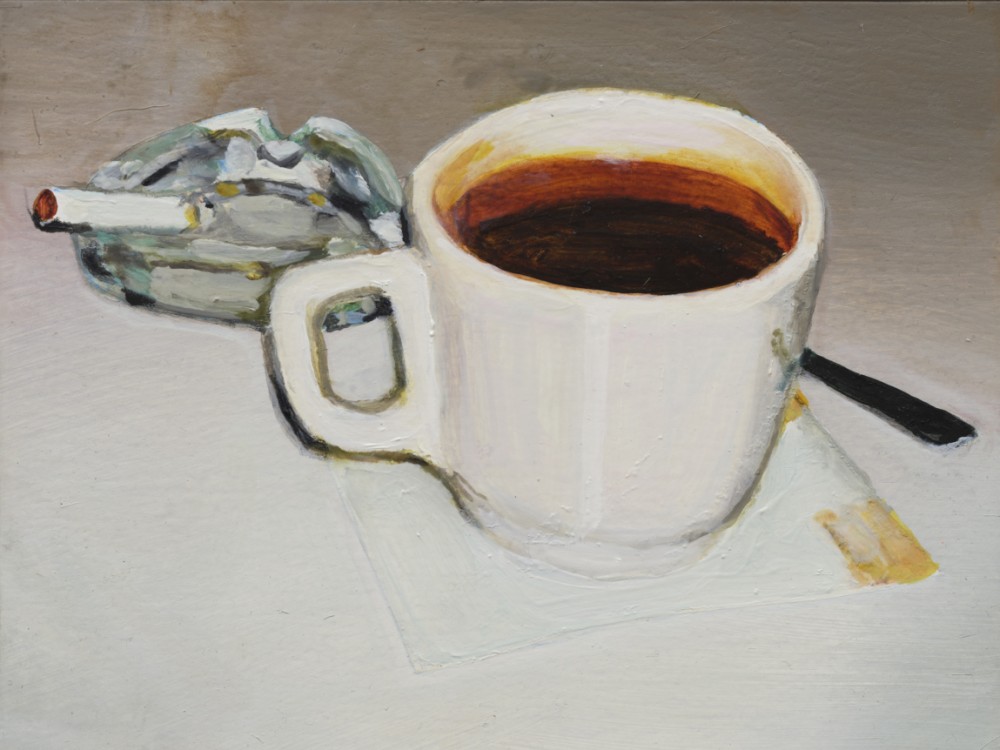
Dike Blair
Since the early 1980s, Blair has painted from his own photographs; the works on display are culled from images captured during the past decade. After using gouache exclusively for more than thirty years, he turned to oil, a medium that offers a wide range of surface effects, in 2017.
Blair’s works in both media approach the photoreal but stop short, concerned instead with capturing the way a moment can mark our memory. In his mise-en-scènes, everyday objects and architectures, both specific to the artist’s experience and universal in their lush appeal, are imbued with a mysterious frisson. The artist’s works may be autobiographical in nature, but they are not confessional—rather, they invoke a more expansive affective language. From the millions of split-second images that make up a life, he selects those that pose a painterly challenge, oscillating between compositions that center a nonhuman subject—coffee cups, blossoming flowers, cigarette packets, desserts, snacks—and those that disperse focus across a flat vista—windows, doors, fields of snow.
These point-and-shoot compositions suggest pure presentness, implicating the viewer in their intimacy by evoking sensorial pleasure. In Untitled (2022), a glass of brown liquor and another of water sit side by side on a bar, both glinting in their own particular way—an interplay of clementine-colored shards defines the pattern in the rocks glass while arcing strokes of desaturated mahogany and white lend the water’s vessel a tactile roundness. Looking at the painting, the viewer can nearly feel the contrast between the burn of the alcohol and the freshness of the chaser. Another characteristically untitled work from 2020 portrays the seam where a slate-gray door meets an off-white wall, the two sections held together by a barrel bolt in its locked position, and one can almost hear the satisfying clunk that comes with sliding the latch and releasing the tension holding it all together.
Blair’s focus on the affective qualities of light comes to the forefront in a 2023 painting of a darkened parking lot illuminated by twin spotlights. A pair of trees mirrors this doubling as they absorb the artificial rays into dense chartreuse foliage, leaving only a sliver of hazy radiance in the image’s middle ground to assert itself against the blackness of the sky and the cement. As Linda Norden has observed, Blair paints “not just the light as light, or the ostensible subject, but their mutual dependence.” From his immediate surroundings, Blair expropriates visual phenomena that reorient our relationship with what is right in front of our eyes.